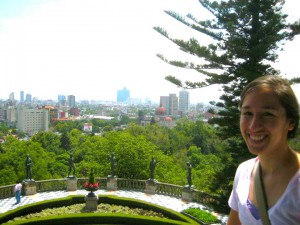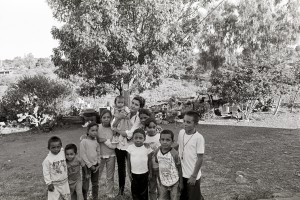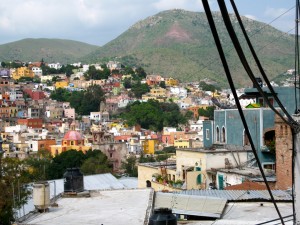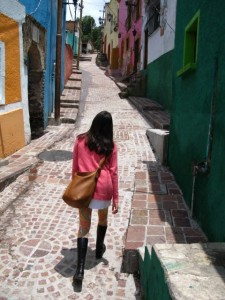
Fulbright U.S. Student Esther Francis with her daughter Matayah after performing a traditional Veracruz dance for Mother’s Day at Alberto Correa, a public elementary school in Mexico City
I dare say I’m not the typical Fulbright U.S. Student. I started taking college classes early—at age 14—and finally finished almost 13 years later. As a non-traditional student and single mother, the Fulbright U.S. Student Program afforded me opportunities that may have otherwise been beyond my reach, or would have perhaps taken another thirteen years to achieve. It was one of the best experiences of my life.
My Fulbright year was my second time living and studying in Mexico. My daughter and son, then ages four and seven, accompanied me while studying Spanish in Guanajuato as a Gilman recipient. When I returned to Park University after my Gilman, the Fulbright Program Adviser at my university immediately picked up on my interest in pursuing further overseas studies. She told me about Fulbright and walked me through the different types of grants. I knew immediately that the Fulbright Binational Business Internship in Mexico was my ticket. She told me the first Park student to receive a Fulbright grant was another non-traditional student who was just finishing up her own grant. Coincidentally, I knew her and had grown up with her daughter. “If she can do it,” I thought, “so can I.”
I received my Fulbright placement as a Human Resources Analyst for the United Nations Association in Mexico (AMNU). Deport-es para Compartir (Sports for Sharing), AMNU’s flagship program, is a program which aims to form better citizens from childhood by encouraging children to participate in their community and to act as change agents on the local level. I coordinated recruitment processes, redesigned the employee performance evaluation, and drafted the department’s first Policies and Procedures Manual. Each task required extensive collaboration with program staff and I had to adapt to a new culture both personally and professionally. Those times when I joined the operations team in the field working directly with children and education staff were particularly rewarding. The grant also included graduate courses at the Instituto Tecnológico Autónomo de México, which supplemented my educational and cultural experiences.






